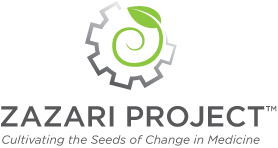In 2015, I was struggling to escape my education to find new ways of thinking about the chronic disease problem. At the time, my colleague Steve Best and I were meeting regularly to free-associate and follow our trains of thought as they wandered off the reservation. On other days, I’d sit with my whiteboard and Michael Michalko’s book Thinker Toys to dissect and turn ideas around in my mind in search of new angles of attack. I needed more fodder.
That October, my quest for insight led me to the doorstep of a Complementary and Alternative Medicine (CAM) exposition in Las Vegas, Nevada. In the foyer, I was greeted by paintings that looked like a cross between Cubism and Burning Man. Was this a health exposition or a séance? I had no idea, but it scored high on the “thinking differently” meter, so I sallied forth.
In 2009, 88 million American adults, more than a quarter of the U.S. adult population, spent $33.9 billion out-of-pocket annually on CAM1. That’s a lot of people looking for healing strategies not available in modern healthcare systems. Despite that, Harrison’s Principles of Internal Medicine, 17th edition, a 2600-page tome of all disease, dedicated a mere four pages to CAM. In those four pages, one passage was particularly enlightening as to why patients are drawn to CAM practices:
“Despite its enormous success in prolonging life and sustaining its quality, contemporary western biomedicine has features that discourage some patients: many diseases, especially chronic ones, are neither curable nor well palliated; existing treatments can impose serious adverse reactions; and provision of care is fragmented and impersonal. CAM, despite lack of proof of efficacy, appeals to many because its practitioners are optimistic, and they invest the time to speak with and touch their patients. CAM empowers patients to make their own health choices, its natural products are believed to be inherently healthier and safer than synthetic ones, and care is provided in a “holistic” fashion, meaning that the broader medical, social, and emotional contexts of illness are considered in designing the treatment plan2”.
In contrast, few would argue that modern medicine is the clear choice in life-threatening emergencies. An ambulance full of nutritionists and sound healers arriving to the scene of a high-speed car crash would not be a welcome alternative to paramedics. Also, there are some chronic conditions for which there are no alternatives to modern medicine. Type 1 diabetics will die without insulin no matter what anyone believes. However, with many other sub-lethal chronic problems that have no cure, health practices take on a more ritualistic appeal. Followers may adopt a healing philosophy based on how well it resonates with the individual, not necessarily on how effective it is at healing.
With this in mind, my approach to the CAM exposition was curious yet guarded, my knowledge notably limited. Aside from more accepted practices including naturopathy, chiropractic, acupuncture, hypnosis and massage therapy, CAM is a vast sea of unregulated wellness claims based largely on anecdotal successes rather than scientific evidence. As I meandered through the brightly decorated tables, I likened myself to a beachcomber in search of treasure. I wasn’t looking to determine if the “treatments” were effective or not. Instead, I was examining the beliefs and thought processes underlying the proposed treatments, trying to find any threads of reality.
I met a variety of healers: naturopaths, chiropractors, spiritual guides, meditation instructors, music and sound healers, psychics, energy workers, hypnotists, herbalists, and practitioners who called upon the healing powers of angels, crystals, essential oils, colored light, and nutrition. One thing the vendors had in common was a hope that their offering mitigated or cured diseases by stimulating the body’s innate healing ability. While I found nothing that posed as a credible cure, I do agree that the healing arts, including modern medicine, have barely scratched the surface of understanding the body’s innate healing mechanisms.
At their core, many claims appeared to be extensions of things we already know and do, scientific or not.
- A spiritual element in healing has survived in some form for thousands of years. Conventional medicine-wise, Herbert Benson, M.D., an American cardiologist who founded the Mind/Body Medical Institute at Massachusetts General Hospital, amassed decades of research on the positive role of spirituality, prayer and stress-reduction on chronic disease.
- Music, in addition to making us feel good, boosts memory and immune function.
- Light is used to treat certain skin conditions and problems in newborns.
- Sound is the basis of ultrasound imaging and treatment for kidney stones.
- Hypnosis has helped many people quit smoking.
Metaphorical extension of these modalities, while theoretically possible, have not panned out to be consistently practical or reproducible alternatives that produce legitimate healing, at least not yet.
By the end of my exposition adventure, I’d found two gems buried in the sands of uncertain claims:
Gem #1: We do not understand the body’s innate healing mechanisms well enough to reliably bolster them.
Gem #2: Belief systems in healing don’t just matter, they matter a lot. No healing art, particularly modern medicine, has put individual beliefs in proper relationship to disease understanding.
The complimentary practices on display at this event appeared harmless and probably helped some people, sometimes. However, I met some that were clearly in business to claim a slice of the $33.9 billion pie. Sometimes the difference between healers and dealers is obvious, sometimes not, a truism that also applies to modern medicine healers.
Two of the vendors were most obviously dealers, not healers. The first offered me a free test to diagnose my biochemical deficiencies. I placed my hand on a glowing plate where LED lights reportedly read my blood chemistry. After five minutes, a personalized health analysis indicated that I was deficient in a whole bunch of chemical-sounding compounds. The only way to fix this was to purchase their nutritional supplements (grass clippings?) on sale for $300 for a month’s supply.
The second guy sold trampolines, had awarded himself a “doctorate in lymphology,” and offered his doctoral education program at the discounted price of $10,000. Although lymphology is a legitimate area of study, this was a total misrepresentation. He told me that his father had received four Nobel Prizes for discovering one cellular protein that evidently was the basis of his version of lymphology. Further inquiry revealed that the father’s “protein discovery” resulted from reading a Scientific American article published 20 years after the actual discovery by Nobel Prize-winning European scientists.
While scammers are a dime-a-dozen, the challenge is to recognize that people who are brilliantly ahead of their time could be lumped in with the quacks. Historically, quackery often breeds discovery. Sir Isaac Newton discovered gravity while studying magic. Sir William Herschel, a musician with a telescope, discovered Uranus while searching for extraterrestrial life on the moon. Dornier MetTech used airplane testing equipment to treat kidney stones which replaced lithotripsy technology that had been in place since 1832.
While unusual ideas get observers looking or thinking differently, the most important lesson about discovery is this: observers didn’t find what they were looking for but instead noticed something unusual in the periphery of what they thought they were looking for. This is insight. It is nonlinear. While it is often serendipitous, it always requires the presence of an observant, inquisitive mind.
In conclusion I leave you with the following anonymous quote: “Creativity in living is not without its attendant difficulties. For peculiarity breeds contempt. And the unfortunate thing about being ahead of your time is that when people finally realize you were right, they’ll say it was obvious all along.”
Works Cited
- “The Use of Complementary and Alternative Medicine in the United States: Cost Data.” National Institutes of Health. U.S. Department of Health and Human Services, 1 July 2009. Web. 23 Dec. 2014. <https://nccam.nih.gov/sites/nccam.nih.gov/files/NHIS_costdata.pdf>.
- Straus, Stephen. “Chapter 10: Complementary and Alternative Medicine.” Harrison’s Principles of Internal Medicine. Ed. Fauci Anthony and Dennis Kasper. 17th ed. New York: McGraw Hill Medical, 2008. 62-66. Print.
- Science Museum. Brought to Life: Exploring the History of Medicine.” Belief and Medicine. Web. 18 Dec. 2015. <http://www.sciencemuseum.org.uk/broughttolife/themes/belief.aspx>.

